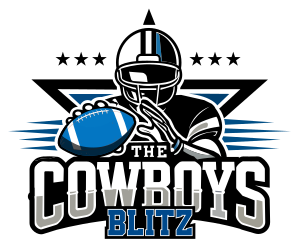Honest question -- couldn't that be due to the fact that you're only looking at run efficiency and not run usage? A statistically inefficient run game could be explained by a defense loading the box with linebackers, for example, creating matchup opportunities in the passing game, which would tend towards a more efficient passing game.
Taking it one step further, usage vs. efficiency doesn't necessarily imply that a team is running the ball more often, either. It just means that the opposing team is EXPECTING the run more often, which we don't have a way of quantifying. The most you could do is try to dig up clues here and there, possibly through media coverage or looking for supporting statistical data, i.e.:
- Were teams expected to game plan that week against a star running back?
- Did the back recently come off of a string of big games?
- Was this a team known for having the ability to hurt you with the run earlier in the season or even the previous season?
- Did passing efficiency ever go down when a star running back was injured?
The usage-efficiency curve in basketball is a perfect analogy here due to the way scheme, strategy, and available personnel have hidden affects on statistical outcomes.
Efficiency is the key. For both passing and running. Yards don't matter. Attempts are actually inversely related. The more you pass after around 20 attempts, the more you tend to lose. The more you run over 25 times, the more you win. Two key factors play into both. Teams winning usually try to run more to close out the game. Teams losing tend to pass more to catch up.
No disagreement there.
We also know that you can't pass 100% of the time or run 100% of the time. You will never win that way. So if passing is the only thing that's important, why do they have to run to win? And they do. The most out of whack balance would be probably around 40% run to 60% pass. Chances are very high that those teams aren't going to the playoffs. More common is around 45% run to 55% pass. Some teams want an even 50 50 balance. Some want to run more than pass.
So the "horde" knows that you have to run to win. To me, that is correlation. But does running cause you to win more often or does passing cause you to win more often?
Stat guys are now talking about "passing efficiency". Not yards or attempts or completions. But being an efficient passing team, more importantly, an efficient QB. QBR has the highest correlation to winning. It's an efficiency stat. Passer Rating is second and that's what Adam likes to use. He doesn't believe in QBR either. But I digress.
So we all agree that having an efficient QB wins you games. We see the QBR or Passer Rating stat and we can find out how many wins a team has. Easy stuff.
But how do you measure an efficient running game or RB? Football Outsiders has a DVOA or DYAR stat. They can apply it towards passing, rushing or individual players. It measures efficiency. Do you get what you are suppose to get in certain situations. Or do you fall short or even exceed. Has nothing to do with number of attempts or total yards. Problem with that is that it isn't a stat that is easily accessible on a week to week basis. So it's hard to determine the correlation to winning of DVOA for each passing and rushing.
My belief is that having a high DVOA for both passing and rushing would result in a higher correlation to winning than simply QBR or Passer Rating. Now if having a high passing DVOA and low rushing DVOA still proves to have the highest correlation to winning, then we can shift the thinking towards the running game not having any value. But there are still factors that DVOA still doesn't account for. Such as how does running the ball and controlling time of possession along with DVOA correlate to winning? How do you really measure the physical affect on a defense when you can consistently rush the ball?






 " award of the month. CONGRATS!!!!
" award of the month. CONGRATS!!!!